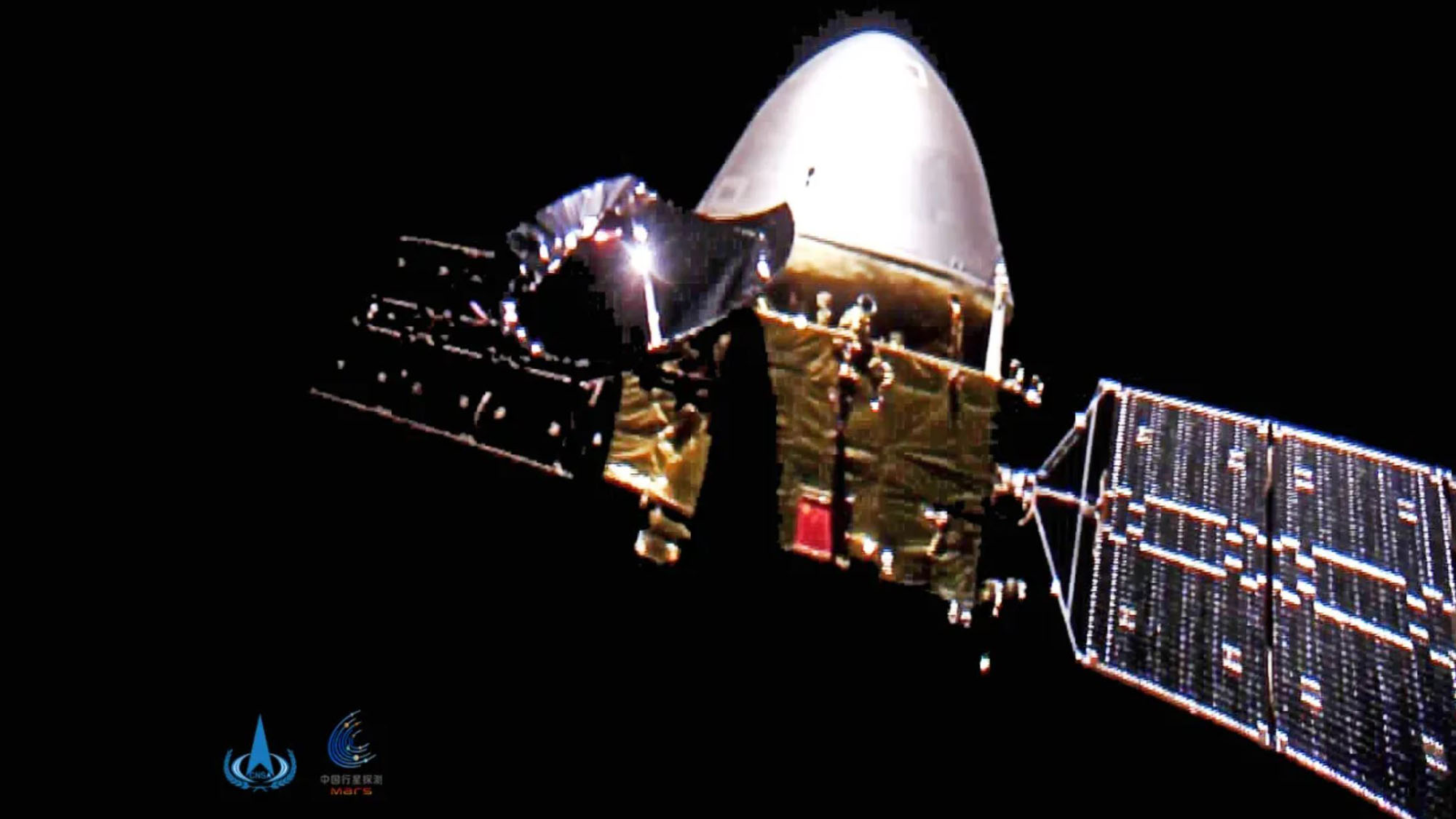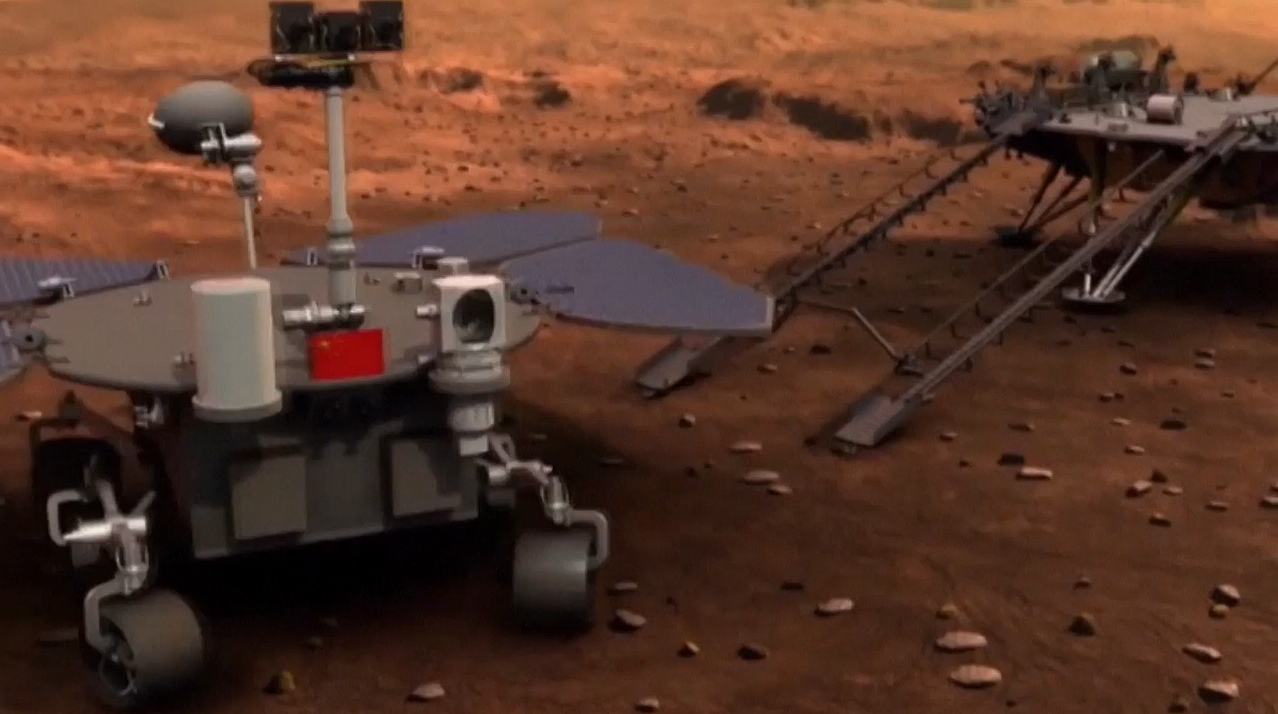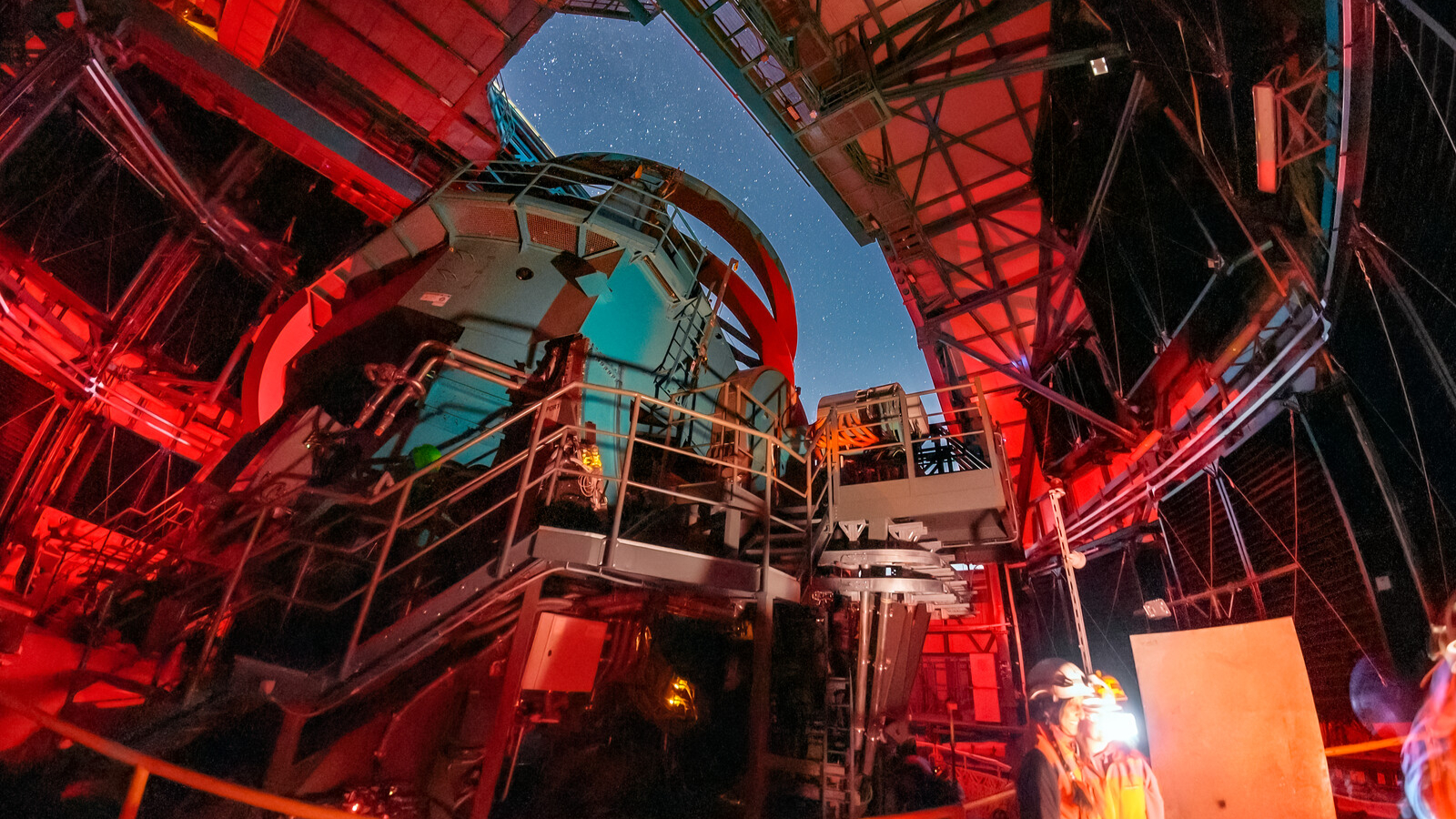Tianwen-1: China's first Mars mission
An exciting addition to the fleet exploring the Red Planet.

Tianwen-1 is China's first independent interplanetary mission. The probe, a combination orbiter, lander and rover, launched from Earth aboard a Long March 5 rocket on July 23, 2020 in the midst of the COVID-19 pandemic.
Having traveled 292 million miles (470 million kilometers) from Earth, Tianwen-1 successfully entered orbit around the Red Planet in Feb. of 2021.
See photos and artwork of the Tianwen-1 mission here.
Watch video of Mars captured by the arriving probe here.
According to a paper published by the Tianwen-1 team in Nature Astronomy, the orbiter has a long list of scientific goals. It will circle the planet in a polar orbit to map Mars' morphology and geology while using a Mars-Orbiting Subsurface Exploration Radar instrument to measure soil characteristics and water-ice distribution. It will also collect data on the ionosphere and the electromagnetic and gravitational fields around the planet. Finally, it will serve as a communication relay for the rover to send and receive information from Earth.

About three months after arrival, in May or June 2021, the lander will detach from the orbiter, with the rover tucked inside, and will descend to Utopia Planitia, which researchers say is a relatively safe but scientifically important landing site. After the touchdown, the lander will unfurl a ramp for the rover to roll out and begin its adventures on the Red Planet.
Read more: Tianwen-1 makes orbital adjustments to prepare for landing
The rover will complement the orbiter's investigation of the surface soil characteristics and water-ice distribution with its own Subsurface Exploration Radar. It will also analyze surface material composition and characteristics of the Martian climate and environment on the surface.
There's still plenty of room on Mars
Tianwen-1 reached Mars within days of two other major missions: the United Arab Emirates' Hope satellite and NASA's Perseverance rover. All three took advantage of a particularly opportune launch window when objects launched from Earth would have a shorter, more efficient path to Mars. But all three missions will have plenty to accomplish on the Red Planet.
Various space missions, including the Mars Reconaissance Orbiter, the European Space Agency's Mars Express and several of NASA’s Mars rovers, have found possible evidence of water on or under the planet's surface. But both the Tianwen-1 orbiter and the as-yet-unnamed rover will use radar devices to search for even better evidence of pockets of water on Mars.
See the notable features of Tianwen-1's first photo of Mars
That's important, scientists say, because plenty of evidence points to Mars having been capable of supporting life at some point in its history: in some areas, it likely hosted liquid water. According to the Mars Reconnaissance Orbiter, Tianwen-1's intended landing site at the Utopia Planitia crater may still host an underground deposit containing as much water as Lake Superior. On a broad scale, researchers around the globe hope to use information from any of the new Mars missions to investigate how a planet can transform from a possibly habitable system with liquid water, organic material and an energy source into a dry, dusty and desolate place.

While the surface of the planet has been extensively imaged from a distance, rovers have so far covered a mere speck of the area. According to Sue Smrekar, a planetary geophysicist at NASA's Jet Propulsion Laboratory in California and the deputy principal investigator for NASA's InSight Mars mission, "We have only seen less than one percent of Mars," she said in an interview with CNBC.
And since the planet is so geologically complex, according to Raymond Arvidson, a planetary geologist at Washington University in St. Louis, in an interview with Nature, missions that examine different parts of Mars could add information to the global knowledge of the planet.
Read more about preparations for Tianwen-1's launch.
Utopia Planitia is one of the many Mars locations totally unexplored from the surface. Alfred McEwen, director of the Planetary Image Research Laboratory at the University of Arizona and principal investigator of the HiRISE camera on NASA's Mars Reconnaissance Orbiter described the site as "mostly flat and smooth but with craters, aeolian [wind-sculpted] ridges, and a few boulders," in an October 2020 interview with Space.com
The area has been "interpreted as covered by mud flows by some scientists, so ancient deep groundwater may have existed, and this could be an interesting location to study with a rover," McEwen said.
New horizons for China's space program
If successful, Tianwen-1 will be the first mission from any country to bring an orbiter, lander and rover to Mars all in one mission.
China's first attempted Mars mission, Yinghuo-1, launched on a Russian rocket along with Russia's Phobos-Grunt mission in November 2011. The launch failed, and all the spacecraft aboard eventually fell back to Earth.
See images of a successful launch of the Long March 5 rocket in 2019.
Tianwen-1 comes on the heels of several successful and groundbreaking lunar landings and moon rovers for China's space program, but Mars is much farther away, has much stronger gravity and is considered a particularly difficult place to land.
But this mission could also be considered a step toward an even more ambitious project. This probe benefited from China's engineering successes with its Chang'e lunar explorations, and will in turn provide valuable data and experience to a future Chinese mission that would return soil and mineral samples from Mars to Earth, according to the Planetary Society. That's important because once back on Earth, samples can be analyzed more deeply than can be accomplished remotely by the rovers' sophisticated but still miniaturized instruments.

Questioning the heavens
Like many explorations of space, Tianwen-1 has a philosophical side. According to the team that built the probe, "Tianwen" means 'questions to heaven,' a phrase taken from the name of a famous poem by one of the greatest poets of ancient China, Qu Yuan. Future interplanetary missions from China are expected to share the "Tianwen" moniker.
Additional resources:
- Check out this JPL explainer and exercise in calculating launch windows for Mars missions.
- Read more about the chemistry that all three 2020 Mars missions will undertake in this article from Chemical and Engineering News.
- Explore the technical details of the instruments on board probe, lander, and rover in this paper from Advances in Space Research.
This article was updated on Feb. 23, 2021 by Space.com Reference Editor Vicky Stein.
Join our Space Forums to keep talking space on the latest missions, night sky and more! And if you have a news tip, correction or comment, let us know at: community@space.com.
Breaking space news, the latest updates on rocket launches, skywatching events and more!

Vicky Stein is a science writer based in California. She has a bachelor's degree in ecology and evolutionary biology from Dartmouth College and a graduate certificate in science writing from the University of California, Santa Cruz (2018). Afterwards, she worked as a news assistant for PBS NewsHour, and now works as a freelancer covering anything from asteroids to zebras. Follow her most recent work (and most recent pictures of nudibranchs) on Twitter.
